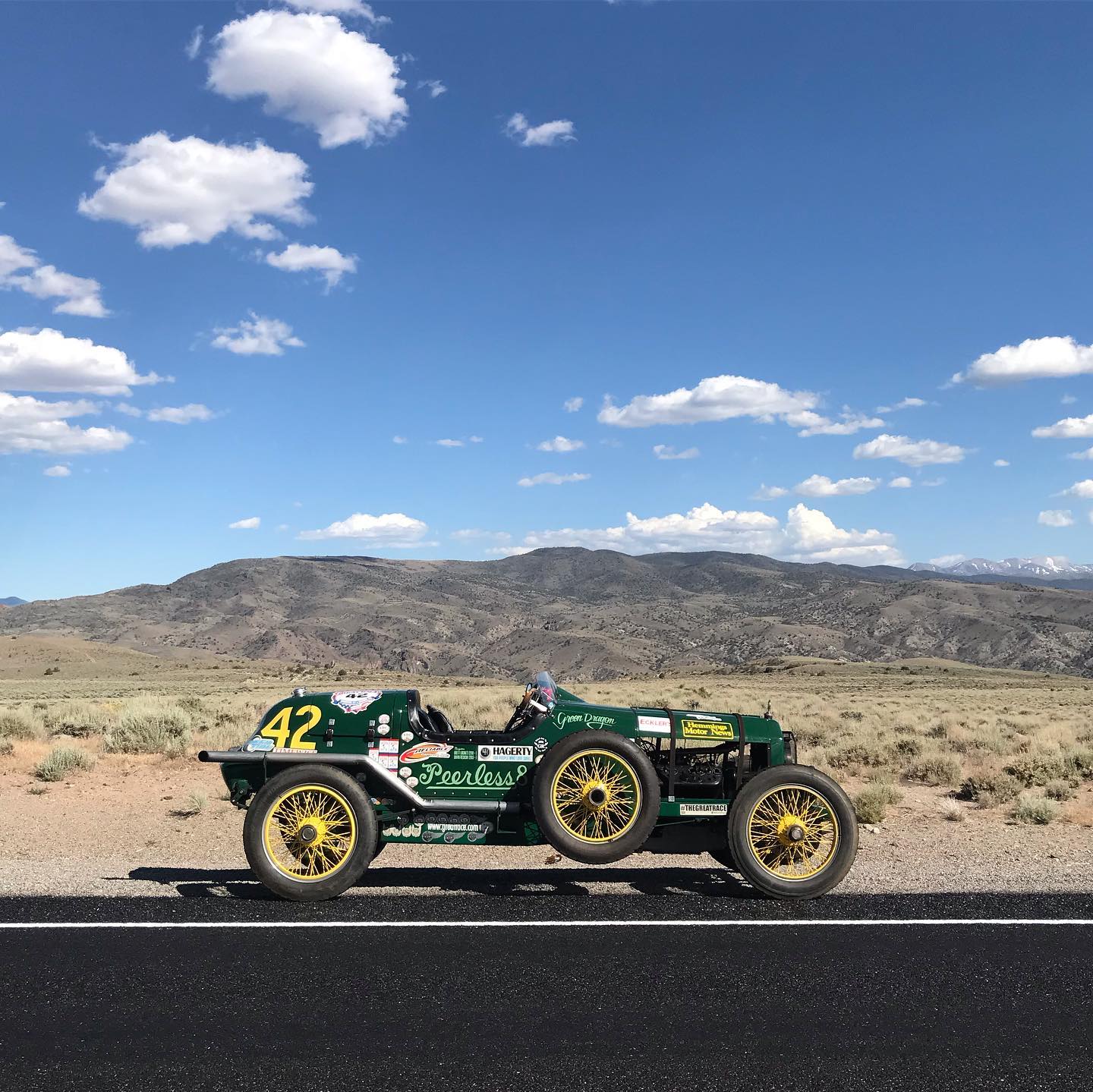How I survived 2300 miles over nine days in an open-top 1917 Peerless
Taking an old car on a long journey is an invitation for adventure. To up the ante a bit, we took a 102-year-old race car on the Great Race, a time-speed-endurance rally that covered more than 2300 miles in just nine days. The experience required biblical-scale endurance.
The word epic is overused. It seemed as though Great Race grand poobah Jeff Stumb knew that as he ramped up promotion and hype for the 2019 race, and he removed that four-letter e-word from his vocabulary. In this case, however, epic was a fitting description of the 2019 Great Race. However, in the interest of being more forthcoming and less cliché, I’ll explain why ‘epic’ doesn’t even scratch the surface.
The first days of the route this year placed us in southern California, pointing north for the first leg of our route. We didn’t need a topographical map to understand that from the moment the green flag waved and Wade Kawasaki of Coker Tire declared “Let there be racing!” that this was going to be a brutal challenge.

Immediately out of Riverside, the 116 teams navigated north towards Lancaster, which involved a long steady grade. Barely off the starting line, the hill identified those who brought a prepared car and those who simply brought… a car.
The money at stake for the Great Race might have had something to do with how tough it is. Stumb, a man who has been involved in the great race for decades, could be heard throughout the week repeating, “If you want to win my $50,000, you are going to have to earn it!”—every time someone mentioned the brutal nature of the rallying across the high desert.
The race wasn’t all elevation and heat, though. As quickly as the racers escaped the Egypt of the American southwest, the sky opened and rain fell. While no one felt the need to construct a boat and fill it with two of a kind, those in open cars like the 1917 Peerless that I was piloting (and Brett Lirones was navigating) felt little relief as the battle to survive continued to evolve.
By the middle of the race the challenge evolved from keeping the engine temps under control, drinking enough fluids, and trying not to get burnt to a crisp, to finding ways to evacuate water from floorboards and windshields. I saw so many yellow bottles of Rain-X that I got the impression nobody told me we’d been sponsored.

Then it got cold. And snowy. As we approached the rim of Crater Lake in Crater Lake National Park on Day 6, snow flurries greeted early racers at the entrance gate, while those who arrived later in the morning only got to shiver through the mid-30-degree temps while snapping a picture from the rim of the collapsed volcano.
The Great Race is an annual event, so this isn’t the first time competitors have experienced weather from all four seasons in one run. Still, most teams were visible amazed as to the changing conditions over the course of the nine days of competition.
Stories of healing and resurrection were lived each night and retold each day; the field of 116 pre-1975 cars were pushed to the breaking point by drivers striving to match the rally instructions to exacting detail. For one Model A Ford, this meant a new engine on Day 1. Actually, it was before Day 1—the car ran in previous Great Race rallies, but the car’s crankshaft decided enough was enough while still at the starting point in Riverside. Another team purchased a spare Model A long-block just weeks before the event but was quick to uncrate it as no fewer than 30 Great Racers got their hands greasy while helping complete the swap in just a few hours.


Smaller failures might not be as dramatic, but sometimes small things wear out teams and cars the most. A 1916 Hudson lost an oil line—which rapidly evacuated the 10-quart sump as the car was crossing the desert. A sharp eye and quick hand shut the ignition off immediately after the oil pressure gauge zeroed out, leaving the engine intact enough that after rerouting the oil filter lines to bypass the broken AN fitting, the engine roared back to life and arrived at the dinner stop under its own power. Barely. The ignition coil failed the same day, which fortunately was cured using parts from the spares kept in the Peerless.
Brett and I embarked on this year’s Great Race with the goal of simply finishing—a joy we did not get to experience last year. We took care of the Peerless and it took care of us, braving the elements from SoCal to the LeMay Museum in Washington with the roar of an unmuffled 102-year-old V-8. Brett and I both made rookie mistakes in the closing days of the race, clearly feeling the strain of the nine-day journey. Especially given that we’re barely a step above rookies, we’re proud to say that we finished in 19th place overall out of 116 starters and 92 finishers. We also landed 6th place in the sportsman division (the largest vehicle division in the race).
There are many adventurous ways to enjoy your classic car, but if you want to make new friends, experience fantastic places, and challenge yourself with a demanding rally schedule that feels at times like it’s going to kill you, the Great Race should be on your bucket list. Next year’s route will traverse from San Antonio, Texas, to Greenville, South Carolina. It might not be as tough as this year’s run, but if Jeff Stumb has it his way, you won’t be getting any prize money without pushing yourself far beyond what you thought capable—so come prepared.










